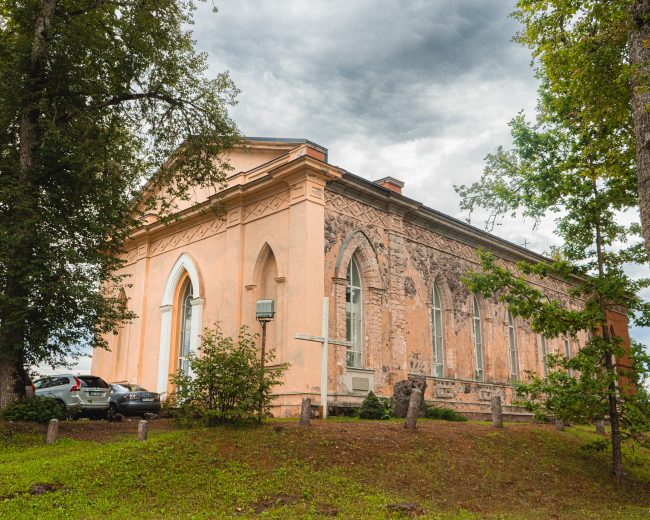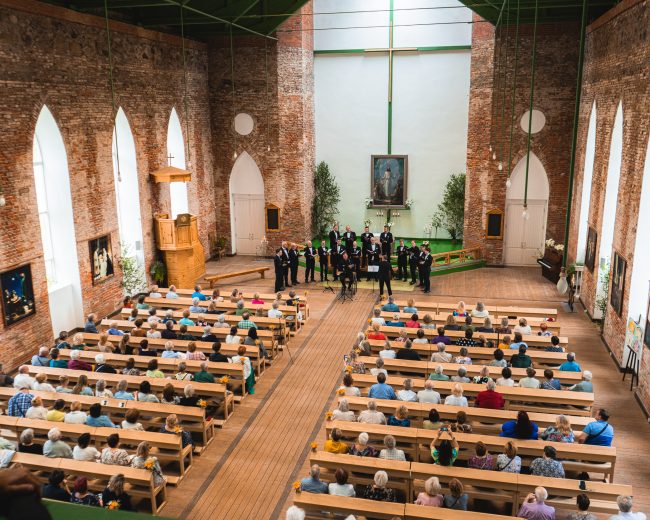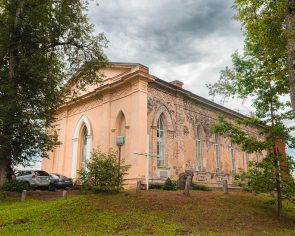Vecpiebalga Lutheran Church
Once half-ruined, this church was revived in the 1990s with the help of a unique and surprisingly well-executed architectural solution, which has no equivalent in Latvia!
The place is suitable for visitors of different ages.
The place is accessible from the outside to a wide number of visitors. The church is open for indoor visits every Sunday.
It is believed that the first church here in Vecpiebalga was built around the year 1340. It is about the same time when the Piebalga Castle was built nearby by order of Riga Archbishop Fridrich. At the end of the summer of 1577, Russian troops invaded Vidzeme and razed many inhabited places to the ground, including Piebalga Castle and the church. Later, the Polish-Swedish War followed, then the Northern War, so for the next hundred years the church was destroyed and then restored with different results.
At the beginning of the 20th century, the size of the congregation grew rapidly, reaching up to 7,000 people. In 1838, following the decision of the parish leaders, the old church began to be demolished in order to consecrate the new, current church built in 1845.
In the fall of 1944, when the German troops were retreating, the church tower was blown up. The relics of the church were saved and hidden, including the 1938 altar painting "Christ Walks on the Land of Piebalga" painted by Jūlijs Jēgers, which once replaced the previous painting by Teodors Gelhāzs with the scene of Christ's crucifixion. The church remained in ruins until the parish officially ceased to exist in 1985. With the beginning of the revival, in 1988, the work of cleaning up the destroyed church was started, and together with the independence of the country, the congregation was also restored.
On October 26, 1997, Archbishop Jānis Vanags consecrated the restored Vecpiebalga church. In 2007, the new organ, built in England in 1928, was consecrated at the 10-year restoration anniversary service of the church.
The unique restoration project of the church was developed by the architect Ausma Skujiņa (1931 - 2015), using very original solutions. There are exposed old walls and skylights in the roof, where tree branches and sun reflections play, covering constructions that are painted dark green and similar to huge spruce hands, and grey boulders instead of the altar in the church. The most unique thing in the church is the solution of the blown-up altar and tower part in red bricks, which successfully transitions into the original walls. The tower has not been rebuilt.
Services are not held during the cold season, but the church is open for individual viewing every Sunday of the year.




Working time
The church is always accessible from the outside.
Open to visitors during the service on Sundays at 10am.

